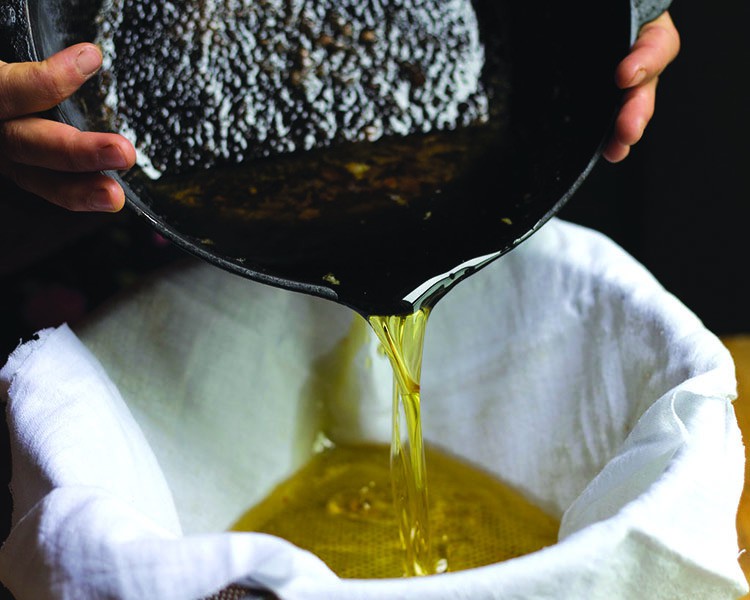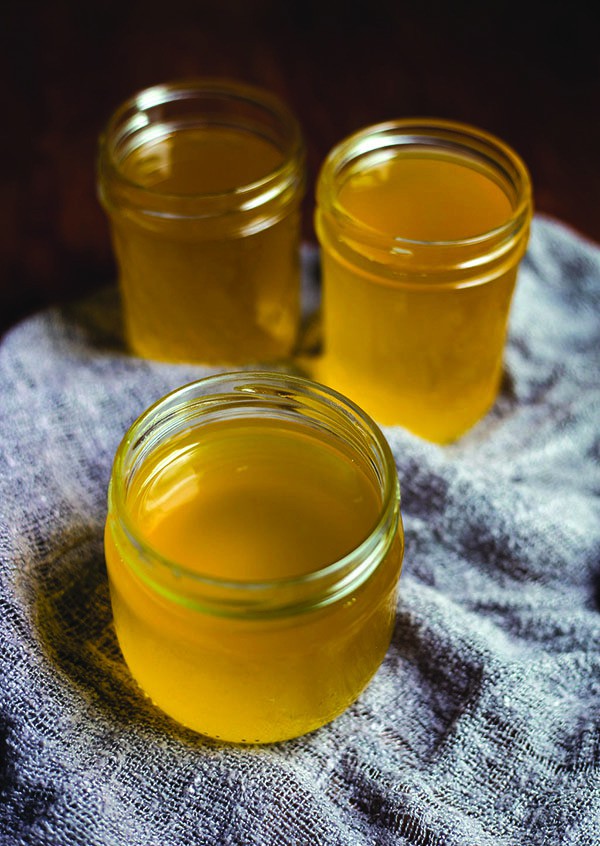
To me, ghee (a type of clarified butter) is evidence of milk’s greatness. The complete process goes like this: Start with grass and a mammal. Milk the mammal. Separate cream from milk. Churn cream into butter. Cook butter (to burn off the last of the water trapped inside). Strain to remove solids, and now you have golden light-catching ghee. Use in place of butter (a higher smoke point means you can fry without fear) or anywhere you’d like nutty, browned butter flavor.
While I don’t typically milk a cow and churn fresh cream for ghee, I do like to start with fresh butter from pastured cows. Once made, ghee is often stored at room temperature, but I find the surface often molds after several weeks. It hardens when refrigerated but easily returns to liquid when warmed.
One perk of ghee-making is the unusual by-product you’re left with: toasted milk solids. As the ghee cooks, a sediment and a crust develop. They’re both made of toasted milk solids, which flavor the ghee. If they get too dark, the final product will take on an unpleasant burnt flavor (that’s why I cook ghee in the oven, where the heat is more even, rather than on the stove). But when they’re toasted to a nut-brown hue, they’re tangy and have a texture akin to unsweetened shortbread cookie bits. I like to toss them on top of a berry crumble or into a bowl of spicy curry. You’ll see that, like ghee, their addition is quite welcome in your kitchen.
Ghee
Makes 2 to 2¼ cups
EQUIPMENT
Medium oven-safe pot (such as a Dutch oven)
12-inch square butter muslin or flour sack dishcloth
Glass jars with lids (enough to store 2 to 2¼ cups ghee)
INGREDIENTS
2 pounds unsalted organic butter

Heat oven to 170°F. Put butter in the pot. Cook, uncovered, for 6 to 8 hours without stirring. While butter cooks, foam will gather on its surface.

Over time, the foam will dry out and form a toasty crust on top of the butter. When the toasted top is medium brown, the ghee is done. Use a spoon to bring up sediment from the bottom of the pot to confirm that it, too, is medium brown.

Skim off and reserve toasted solids. Line colander with butter muslin and place over a bowl. Pour ghee through a lined colander. Liquid ghee collected in a bowl should be clear, yellow, and bright. If there is too much sediment, strain again.

Transfer ghee to jars, cover, and refrigerate for up to 4 months.
More Ways To Go Gaga For Ghee
Drizzle over popcorn and top with nutritional yeast.
Dip lobster claws or steamed clams into a ramekin of ghee.
Smother warm rice with ghee and garnish with sesame seeds.
Toss vegetables (like cauliflower, potatoes, and squash) with ghee and roast.
Use for fried dough (top with powdered sugar).
Photographed by Kate Simon




